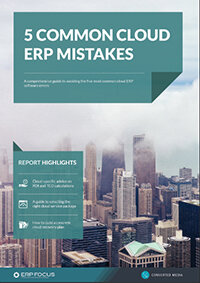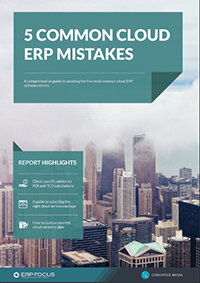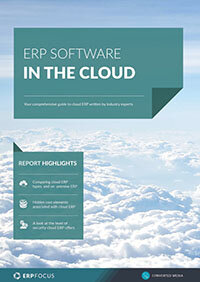Neglecting Cloud ERP Connectivity Is a Big Mistake
While on-premise ERP systems require a degree of attention to issues of connectivity and available bandwidth, these elements become particularly critical to cloud-based ERP implementations. This is because these ERP systems are entirely dependant on external processing to get their work done. Each level of system growth requires a different approach to cloud ERP connectivity, and this often translates into bigger budget requirements as you move up the system growth ladder.
Pre-Launch & Go-Live Processing
For example, when dealing with pre-launch processing power, bandwidth requirements can be both minimized and only periodic. In this phase, the goal is primarily derived by the potential of overall capacity divided by the level of dependability, rather than sheer processing power driven by a requirement for constant ERP transaction handling.
All of these points require prudent ERP planning, supported by clear-eyed risk-management in order to ensure that a cloud ERP system keeps humming along; come rain or shine.
However, once the pre-launch phase is completed and the enterprise is prepared to go-live, enhanced bandwidth becomes a necessary evil. Unfortunately, many ERP project managers tend to forget this limiting factor, and should this element be neglected, ERP go-live performance will suffer accordingly. This planning failure can lead to budget overruns as well as breaking any support and training momentum, thereby creating additional difficulties downstream.
Forecasting Bandwidth Requirements
Once the enterprise has worked most, if not all, of the kinks out of the cloud ERP system, the matter of trimming operational bandwidth becomes important. Most connectivity contracts offer flat rate pricing of one kind or another, as long as stated performance quotas are maintained within established boundaries. However, should the enterprise fail to forecast its *cloud ERP connectivity requirements accurately, overflow fees are typically significant, and can cost an enterprise considerably more than previously expected.
Recommended Reading: five common cloud ERP mistakes and how you can avoid them, featuring advice on connectivity, security, TCO and more
This leads one to the measurement of multi-year bandwidth, which is another advantage derived by extended bandwidth contracts. In this event, most, if not all, service providers offer deep discounts for accepting more than one fiscal year’s worth of service at a time. As a result, one should be mindful of this potential by negotiating both base and extended or demand-based bandwidth on the basis of more than one business year at a time.
All of these points require prudent ERP planning, supported by clear-eyed risk-management in order to ensure that a cloud ERP system keeps humming along; come rain or shine. This means regular measurement and operational testing are necessary elements to any management approach, otherwise a company’s cloud ERP connectivity capabilities will be likely to cause sudden performance constraints that represent a rule rather than an exception.
Free white paper

Five common cloud ERP mistakes
Get your comprehensive guide to avoiding the five most common cloud ERP errors

Featured white papers
-

Five common cloud ERP mistakes
Get your comprehensive guide to avoiding the five most common cloud ERP errors
Download -

Related articles
-

Why you shouldn't underestimate cloud ERP consultant costs
Make sure to take the cost of a consultant into account when planning your cloud ERP budget
-

CMMC Compliance: What Aerospace and Defense Manufacturers Need to Know
Key insights on CMMC compliance, deadlines, and securing DoD contracts with CMMC 2.0 certificatio...
-

Cloud ERP vs on-premise ERP: an objective comparison
Are you choosing between cloud ERP and on-premise ERP? This balanced guide will help

